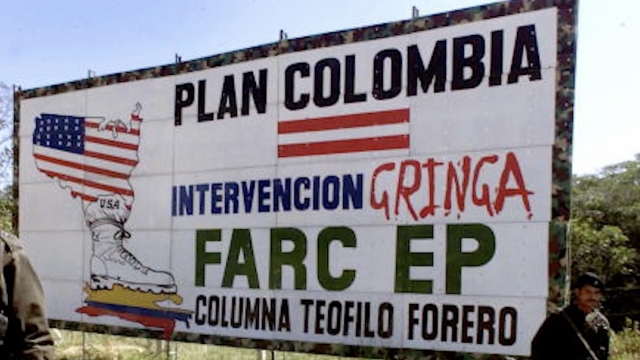In the 1990s, the drug war ranged from the jungles of Colombia to the streets of American cities.
"Despite our best efforts, illegal cocaine is coming into our country at alarming levels, and four to five million people regularly use it," said former President Ronald Reagan.
Today there's a new epidemic: smokable cocaine, otherwise known as crack. It is an explosively destructive and often lethal substance which is crushing its users.
"We can defeat this enemy. But we still have much to do," Reagan said.
The fight against cocaine intensified between 2000 and 2015 with "Plan Colombia", a billion dollar campaign by the U.S. to help Colombia battle drugs.
But almost four decades after Reagan declared cocaine an enemy in the drug war, it still hasn’t been defeated.
The National Institute on Drug Abuse says about five million Americans used cocaine in 2021.
The Global Cocaine Trade has only continued to grow. The UN Office on Drugs and Crime says 21 million people globally use the drug. It estimates global cocaine production has skyrocketed from 800 tons in 1998 to 2000 tons today.
Colombia produces 90% of the American supply, the U.S. says, though Bolivia, Peru and Brazil also contribute.
Experts say a number of factors have fed cocaine’s growth
120,000 families in Colombia grow the crop, according to the University of the Andes in Bogota, largely in rural areas that until 2016 were controlled by the leftist military group FARC.
A goal of the peace deal signed in 2016 between the FARC and the government was to provide law enforcement to the coca-growing regions.
SEE MORE: How cartel violence affects the US-Mexico relationship
A program subsidized farmers who replaced coca with other crops, usually less lucrative ones. But the UN says only 1% of the farmers who switched were paid. Meanwhile, over the last decade, growers have increased the number of varieties of coca from five to 14.
And the fields of the coca shrub have grown much more productive.
In 2014 a hectare of coca had an annual yield of 4.7 metric tons of the crop. In 2021 that yield was 6.4 tons, according to the UN.
New armed groups have arisen to buy the coca from farmers, produce cocaine and sell it abroad.
Traffickers are smuggling the drugs in shipping containers bearing fruit and vegetables. Cargo ships have emerged as efficient smuggling vessels.
They deliver cocaine from South America to Northern Europe, mainly to the major ports at Antwerp and Rotterdam
in the Netherlands. A recent investigation by Bloomberg found that a line of coke now costs less than an alcoholic cocktail.
From Europe, the UN says, the drug is then smuggled east and south, feeding new demand in Central Europe. Asian markets have also emerged.
So what’s next in the effort to stem the tide of cocaine?
Last August Gustavo Petro, a former member of the M-19 guerrilla group, became the first leftist president of Colombia. He has urged a new approach to fighting cocaine.
Among other reforms, Petro wants to fix the substitution program so farmers can be compensated and move on from coca.
in the meantime, American officials are confronting a new risk – that dealers are spiking the cocaine they sell with the synthetic opioid fentanyl, driving an increase in overdoses.
According to New York city officials, there were 17 deaths from cocaine combined with fentanyl in 2017. In 2021, that number jumped over 1,000.
It’s a dangerous new chapter in the decades-long struggle to confront cocaine.
Trending stories at Scrippsnews.com




